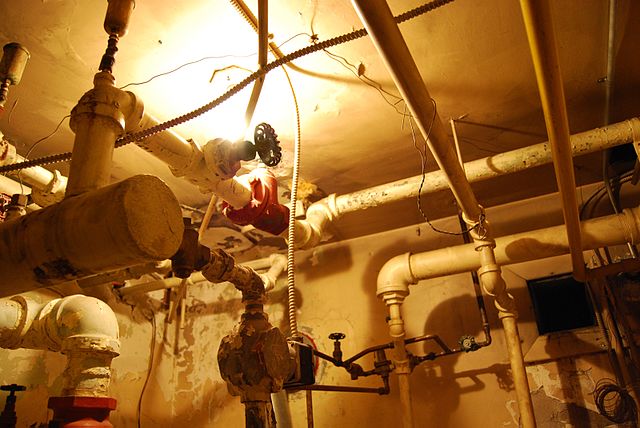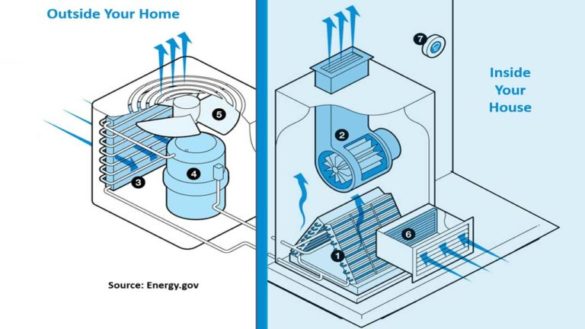Why The Structure of Your House's Plumbing System Matters
Why The Structure of Your House's Plumbing System Matters
Blog Article
We've stumbled upon this great article involving Plumbing Installation 101: All You Need to Know down the page on the web and believe it made good sense to talk about it with you in this article.

Understanding just how your home's pipes system works is important for every home owner. From supplying clean water for drinking, food preparation, and showering to safely removing wastewater, a properly maintained pipes system is important for your family members's health and wellness and comfort. In this thorough overview, we'll check out the intricate network that composes your home's pipes and offer pointers on maintenance, upgrades, and handling typical issues.
Introduction
Your home's pipes system is greater than just a network of pipelines; it's a complex system that guarantees you have accessibility to clean water and reliable wastewater removal. Understanding its elements and exactly how they work together can aid you avoid pricey repair services and ensure everything runs efficiently.
Fundamental Elements of a Pipes System
Pipes and Tubes
At the heart of your plumbing system are the pipelines and tubing that lug water throughout your home. These can be made of various products such as copper, PVC, or PEX, each with its benefits in terms of durability and cost-effectiveness.
Fixtures: Sinks, Toilets, Showers, and so on.
Components like sinks, bathrooms, showers, and bath tubs are where water is utilized in your home. Recognizing just how these fixtures attach to the plumbing system assists in identifying problems and preparing upgrades.
Shutoffs and Shut-off Points
Shutoffs control the circulation of water in your plumbing system. Shut-off shutoffs are important throughout emergency situations or when you require to make fixings, enabling you to separate parts of the system without disrupting water flow to the whole house.
Water System System
Key Water Line
The primary water line connects your home to the local water supply or an exclusive well. It's where water enters your home and is dispersed to various components.
Water Meter and Pressure Regulatory Authority
The water meter steps your water use, while a pressure regulatory authority ensures that water streams at a safe stress throughout your home's pipes system, avoiding damages to pipes and components.
Cold Water vs. Warm water Lines
Recognizing the distinction between cold water lines, which provide water directly from the primary, and warm water lines, which lug heated water from the hot water heater, helps in fixing and preparing for upgrades.
Drainage System
Drain Pipes Piping and Traps
Drain pipes bring wastewater far from sinks, showers, and commodes to the sewer or sewage-disposal tank. Catches prevent drain gases from entering your home and likewise trap particles that can cause blockages.
Air flow Pipelines
Ventilation pipes enable air right into the drainage system, preventing suction that could slow down drain and trigger traps to empty. Appropriate ventilation is important for maintaining the integrity of your plumbing system.
Importance of Proper Drainage
Ensuring correct drain avoids backups and water damage. Frequently cleansing drains pipes and keeping catches can stop costly repairs and prolong the life of your plumbing system.
Water Heating Unit
Types of Water Heaters
Hot water heater can be tankless or typical tank-style. Tankless heating systems heat water as needed, while containers save warmed water for instant use.
Updating Your Plumbing System
Factors for Updating
Updating to water-efficient fixtures or replacing old pipelines can boost water top quality, minimize water expenses, and increase the value of your home.
Modern Plumbing Technologies and Their Benefits
Discover modern technologies like wise leak detectors, water-saving bathrooms, and energy-efficient hot water heater that can conserve money and reduce ecological effect.
Cost Factors To Consider and ROI
Compute the in advance costs versus long-term savings when thinking about pipes upgrades. Several upgrades spend for themselves through lowered energy expenses and fewer repairs.
How Water Heaters Connect to the Pipes System
Understanding how hot water heater attach to both the cold water supply and warm water distribution lines helps in detecting problems like insufficient hot water or leaks.
Maintenance Tips for Water Heaters
Routinely flushing your hot water heater to eliminate debris, inspecting the temperature setups, and evaluating for leakages can expand its life-span and improve energy performance.
Typical Plumbing Concerns
Leakages and Their Causes
Leakages can happen as a result of maturing pipes, loose installations, or high water pressure. Addressing leakages quickly prevents water damages and mold development.
Blockages and Blockages
Obstructions in drains and toilets are commonly caused by flushing non-flushable things or a build-up of oil and hair. Utilizing drainpipe screens and bearing in mind what drops your drains can stop obstructions.
Signs of Pipes Problems to Look For
Low tide pressure, sluggish drains pipes, foul odors, or unusually high water bills are indications of possible plumbing issues that need to be addressed immediately.
Plumbing Maintenance Tips
Routine Inspections and Checks
Schedule yearly pipes inspections to catch issues early. Look for indications of leakages, corrosion, or mineral buildup in faucets and showerheads.
DIY Upkeep Tasks
Easy jobs like cleansing tap aerators, checking for bathroom leaks making use of color tablets, or protecting revealed pipelines in cold climates can stop significant plumbing issues.
When to Call an Expert Plumbing Technician
Know when a pipes issue calls for professional knowledge. Attempting complicated fixings without proper expertise can cause more damage and higher repair work prices.
Tips for Decreasing Water Use
Easy routines like taking care of leakages promptly, taking shorter showers, and running full tons of laundry and meals can conserve water and lower your utility costs.
Eco-Friendly Pipes Options
Think about sustainable pipes products like bamboo for flooring, which is durable and eco-friendly, or recycled glass for kitchen counters.
Emergency situation Preparedness
Actions to Take During a Pipes Emergency situation
Know where your shut-off shutoffs lie and just how to switch off the water in case of a burst pipe or significant leakage.
Relevance of Having Emergency Get In Touches With Convenient
Maintain get in touch with information for local plumbing professionals or emergency situation services readily offered for fast reaction during a pipes dilemma.
Environmental Influence and Preservation
Water-Saving Fixtures and Appliances
Installing low-flow faucets, showerheads, and toilets can considerably reduce water use without giving up efficiency.
DIY Emergency Fixes (When Relevant).
Momentary repairs like using air duct tape to spot a leaking pipe or positioning a bucket under a leaking faucet can decrease damage till an expert plumbing gets here.
Final thought.
Comprehending the makeup of your home's plumbing system empowers you to keep it efficiently, saving money and time on repair work. By following regular maintenance routines and remaining informed regarding contemporary plumbing modern technologies, you can ensure your plumbing system operates successfully for years ahead.
The Anatomy of Your Home s Plumbing System
Understanding the anatomy of your home s plumbing system is essential for any homeowner. It not only helps in identifying potential issues but also facilitates effective communication with professionals when repairs or upgrades are needed. Your home s plumbing system is more than just pipes and faucets; it s a complex network that ensures the efficient and hygienic flow of water in and out of your house. In this blog, we ll dissect the crucial components of your home s plumbing system. For those in Antelope Valley, Brock Plumbing is your trusted partner for all your plumbing needs, ensuring your system functions smoothly and efficiently.
Water Supply System
Main Water Line: This is where your home s plumbing system begins. The main water line connects your home to the public water supply or a private well. Pipes and Shut-off Valves: Pipes distribute water throughout your home. Shut-off valves are crucial for controlling the flow of water and making repairs without shutting off the entire system. Drainage System
Drain Pipes: These pipes carry waste and water away from sinks, toilets, and showers. Vents: Vents allow sewer gases to escape and help maintain proper pressure in the drainage pipes, ensuring efficient flow of wastewater. Traps: Every fixture has a trap, a U-shaped pipe that holds water and prevents sewer gases from entering your home. The most common is the P-trap under sinks. Fixtures and Appliances
Fixtures and appliances are the most interacted with parts of your plumbing system. They include sinks, toilets, showers, dishwashers, and washing machines. Each fixture and appliance has its own supply and drainage connection, ensuring they receive clean water and can dispose of wastewater effectively.
Water Heating System
Your water heater is a crucial component, providing hot water to various fixtures and appliances in your home. It can be tank-based or tankless, with each type having its own set of advantages and maintenance requirements. Regular maintenance is essential to ensure efficient operation and extend the lifespan of the unit.
Sump Pump
In areas prone to flooding or with high water tables, a sump pump is an essential part of the plumbing system. It s installed in the lowest part of your basement or crawlspace and pumps out water that accumulates, preventing flooding and protecting your home from water damage.
Septic System
Homes that are not connected to a municipal sewer system have a septic system and an underground wastewater treatment structure. Understanding how to maintain your septic system is crucial to prevent backups, odors, and early system failure.
Conclusion
Your home s plumbing system is a complex and essential network, ensuring the efficient and hygienic flow of water in and out of your property. Understanding its key components helps in maintaining it properly and identifying issues before they escalate into major problems. For residents in Antelope Valley, Brock Plumbing is dedicated to providing top-notch services, ensuring that every part of your plumbing system is in perfect working order. Trust our team of professionals to handle all your plumbing needs, ensuring your home remains comfortable, safe, and well-maintained.
https://brockplumbinganddrains.com/blog/the-anatomy-of-your-homes-plumbing-system/

I'm very serious about Plumbing Installation 101: All You Need to Know and I'm hoping you enjoyed our piece. Sharing is nice. Helping others is fun. We enjoy your readership.
Get A Free Quote Report this page